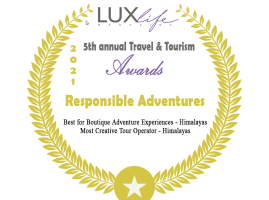UNESCO has chosen 10 World Heritage sites, including seven ancient sites in the Kathmandu Valley, Lumbini – The Birthplace of Lord Buddha, Chitwan National Park, and Sagarmatha National Park. These heritage sites have been chosen based on their cultural and natural values.
The list of Cultural World Heritage Sites:
In the centre of Kathmandu – Kathmandu Durbar Square, which has Hanuman Dhoka, Degutale Temple, Taleju Mandir, Nasal Chowk, Nine story Basantapur Tower, Panch Mukhi Hanuman Temple, Mul Chowk, Mohan Chowk, Sundari Chowk, Tribhuvan Museum, King Mahendra Memorial Museum, and Kal Bhairab temple in its vicinity.
The Hindu Mythology claims that there would be an instant flow of milk from the wall where a single person translates the 17th-century inscription on a stone on the walls of Hanuman Dhoka. Hanuman Dhoka, the former Royal Palace of the Malla kings, passed on to the succeeding Shah dynasty. The Royal family lived in the Hanuman Dhoka palace until 1886 and shifted to The Narayanhiti Palace. However, the former is still used for ritual and ceremonial occasions. New Kings were crowned inside the palace before Nepal became a Republic. The palace has a Hanuman statue from the 17th century to the left of the palace entrance and a fantastic sculpture of Lord Narasimha. The palace bears the historical reminisce of Nepal’s Royal family, culture, and religion. The museums inside the palace let one explore the culture, religion, customs, tradition, architecture, history of Royal palaces, etc. There is an entrance fee to enter the museums. The museums remain open seven days a week except for Tuesdays, when it opens from 10.30 am to 3 pm during the winter and from 10.30 am to 4 pm in the summer. One can visit the museums on Fridays from 10.30 am to 2 pm.

Patan Durbar Square lies 5 km South-East of Kathmandu Valley by Bagmati River. Four hundred fifty-nine hectares of Patan are bounded by Emperor Ashoka’s four stupas in the 3rd century B.C, as recorded in history. Patan is also called Lalitpur – City of fine arts. There are several legends attached to the origin of the term Lalitpur. One such legend says that when Kathmandu was engulfed with severe drought in ancient times, three people were assigned to summon God Red Machhendranath into the valley for rainfalls from Kamaru Kamachhya in Assam, India. Amongst the three people, one was a farmer named Lalit, who is believed to have contributed more than the other two. When rains finally poured into the valley, people, as a sign of gratitude, Sanskritized the valley after his name and the term ‘pur’, meaning township, and it was subsequently named Lalitpur. Another tale claims that the valley was named after King Yalamber. The denizens refer to Patan as Yala. History shows that Patan was founded in the 3rd century by the Kirat dynasty and later modelled into perfection by Lichhavis during the sixth century, followed by the Malla dynasty. This city presents a potpourri of the most exquisite traditional crafts and rich artistic heritage. Patan Durbar Square consists of Mahaboudha Temple, Kumbeshwor temple, Krishna Temple, Golden Temple of Hiranya Varna Mahavihar, Mulchowk, Jagat Narayan Temple, Big Bell, Pillar of Yognarendra Malla, Hari Shanker temple, Vishwanath temple, Bhimsen temple, Marga Hiti, Mani Mandap, Café Pagoda, Rato Machhendra Temple, Minnath, Rudra Varna Mahavihar. These are the major attractions of Patan.

Bhaktapur lies 13 km in the Eastern part of the Kathmandu valley. It is also known as Bhadgaon or Khwopa. It is regarded as the abode of ancient Nepali culture, custom, and alluring art pieces of excellent craftsmanship. Each historical monument represents Nepal’s medieval culture, religion, and tradition. The Newari populace dominates Bhaktapur. Bhaktapur is the only place in Nepal which has remained untouched by western culture. Lion Gate, Golden Gate, Art Gallery, Statue of King Bhupatindra, Nyatapola Temple, and fifty-five windowed Malla palaces are the pride of Bhaktapur. The place has some excellent restaurants and hotels to cater to the needs and requirements of tourists.

Swayambhunath stupa lies just 3 km westward from Kathmandu’s city centre. Ancient legend has it that it was an island a couple of thousand years ago. A stupa was built later. King Manadeva contributed to the making of the stupa in 460 AD. However, after the Mughal invasions, it was destroyed and had to undergo renovations in the 14th century. In the 17th century, King Pratap Malla further enhanced the architecture and added a stairway to the stupa. The stupa is a solid hemisphere of brick and clay, supporting a lofty conical spire capped by a copper gilt pinnacle and has Lord Buddha’s eyes painted on all four sides of the spire base. The Buddhists regard it as one of the holiest places. Swayambhunath also offers a majestic view of the entire Kathmandu valley on clear days.

Pashupatinath temple is a temple of Lord Shiva and is the holiest place shrine for Shiva. The sacred temple lies on the sacred Bagmati River banks, 5 km east of Kathmandu city. Non-Hindus are strictly prohibited from entering the temple. It has a two-tiered roof and four silver doors. However, Hindu devotees from around the world come here to pay their homage to Lord Shiva.

Boudhanath stupa epitomizes Tibetan Buddhism. It lay 8 km East of Kathmandu and was built by a Licchavi King Man Dev in the 5th century A. D. The colossal and ancient stupa is regarded as one of the world’s biggest stupa and has been built on a stepped octagonal base and inset with alcoves representing the Mandala. Tibetans came in thousands to this famous Buddhist Chaitya after the Chinese invasion of Tibet and energized the stupa. Various temples or ‘gompas’ surrounds the stupa. The whole place’s atmosphere lightens with zest as the fragrance of incense drifts through the air. Chanting monks and the creaking of prayer wheels can be heard while strolling around the stupa’s base. It is one of the prime sites for pilgrims and tourists in the country.

The two-tiered Changunarayan temple is 15 kilometres away from Kathmandu city. It is believed to be one of the oldest temples in Nepal. Since this is the temple of Lord Vishnu, also called Narayan and situated near Changu, hence the name. A stone inscription of 464 A.D. and other architectural masterpieces featured in the temple showcases Nepal’s ancient history. The temple also bores Vishnu’s ten incarnations; Vishwaroop, Vishnu Vikranta, Vishnu riding Garuda, Nar-Singha Vishnu, etc. Temples of Kileswar Shiva, Chinnamasta Devi, and other gods and goddesses are also present in the Changunarayan temple’s vicinity. The view of the Manohara River is cascading through the lush vegetation that is visible from here.
8. Lumbini

Lumbini lies in the southern Terai plains of Nepal. It is about 300 kilometres southwest of Kathmandu. It is the birthplace of Siddhartha Gautam Buddha and is therefore regarded as a sacred pilgrimage site for Buddhists. In 250 BC, Emperor Ashoka built a large stone pillar containing an inscription about the Buddha’s birth. Lumbini does not bear just historical and religious significance but also cultural importance. Lumbini Garden, Maya Devi Temple, Tara Foundation, World Peace Pagoda, China Temple, Thai Monastery, Burmese (Myanmar) Temple, Nepal Buddha Temple, and Dharmaswami Buddhist monastery are the major attractions of Lumbini. There is a museum and a research centre for Buddhism. It is also considered an ideal destination for birding as it is home to various rare bird species, both residential and migratory. Hotels, restaurants, and lodges of different standards are available in Lumbini.
World Heritage Sites (Natural)

Chitwan is the first National Park in Nepal. It stretches across 932 square kilometres and lies in the inner Terai belt. The park offers a very worthwhile excursion through a jungle safari. With nature at its best, you will come across the rare species of flora and fauna co-existing. Canoeing through the lake and rivers of the park will have you close to crocodiles and other wildlife, making it a fun-filled adventure. During your stay in one of the many resorts of the park, you will be guided on a cultural tour of the lifestyles of indigenous Tharus. In the evenings, you can indulge in the most exotic cultural show of the Tharus.

Sagarmatha National Park is situated in the foothills of Everest and occupies an area of 1,148 square kilometres. It offers the most magnificent views of rugged mountains, glaciers, valleys, and rivers. This national park is home to many plants, birdlife, and exotic animals. Plant species like blue pine, silver fir, rhododendrons, and Birch add to the park’s beauty. On venturing into the garden, one may encounter rare animals like snow leopard, red pandas, lynx, Himalayan Tahr, Musk deer, etc. Birdwatchers can have a perfect experience spotting rare bird species like The Tibetan snowcock, Impeyan pheasants (National bird of Nepal), snow pigeons, and various raptors, to name a few. The Sagarmatha National Park is a storehouse of Himalayan natural resources.
Check out our Trekking packages for Nepal, Bhutan, India, and Tibet.
















